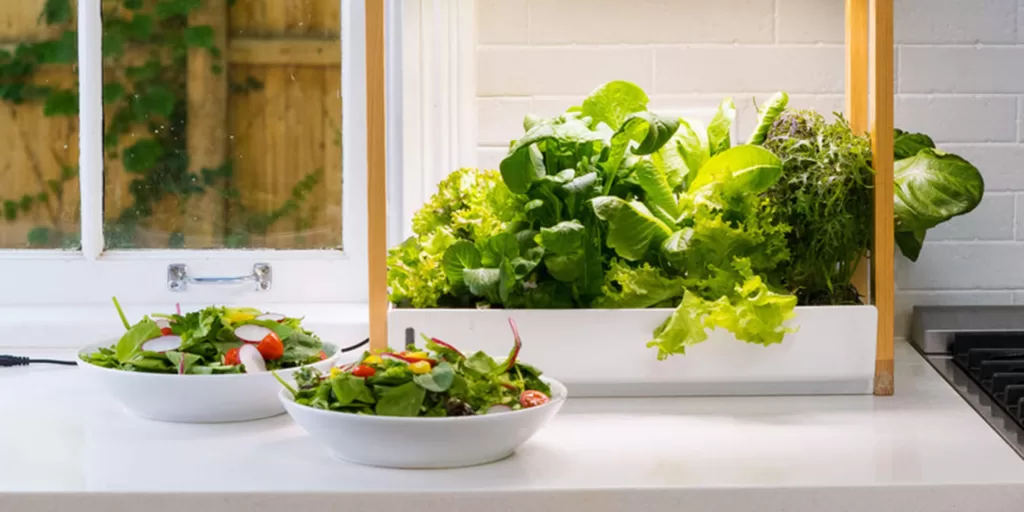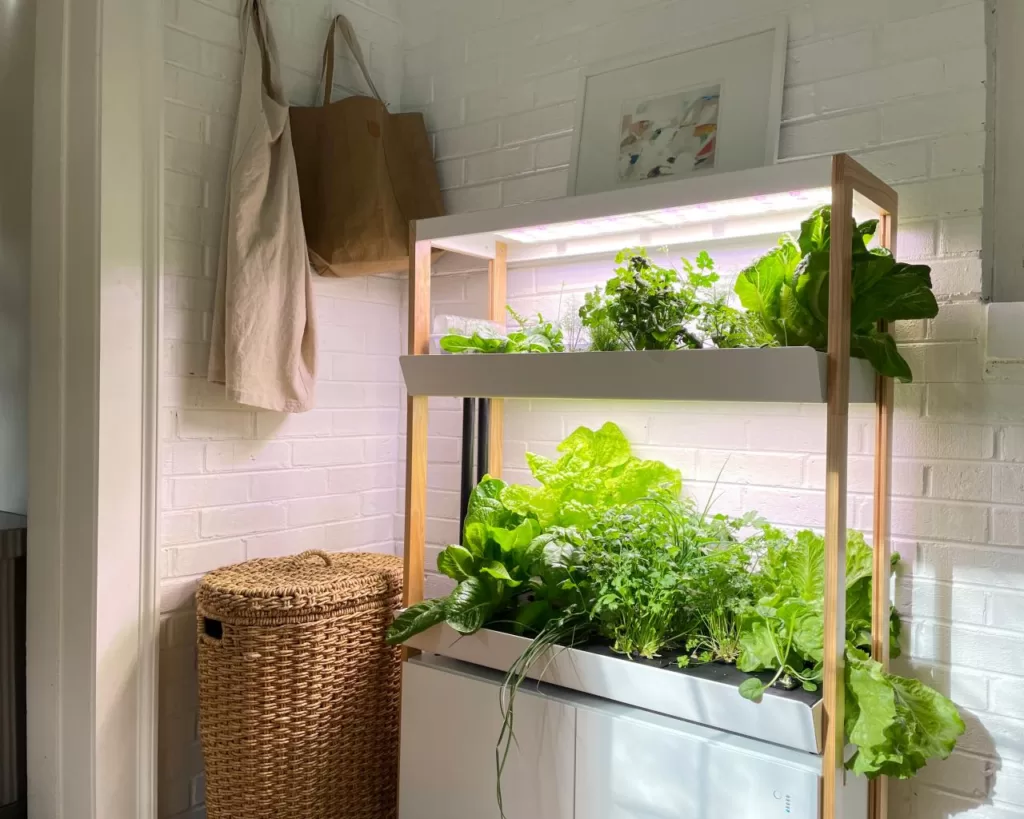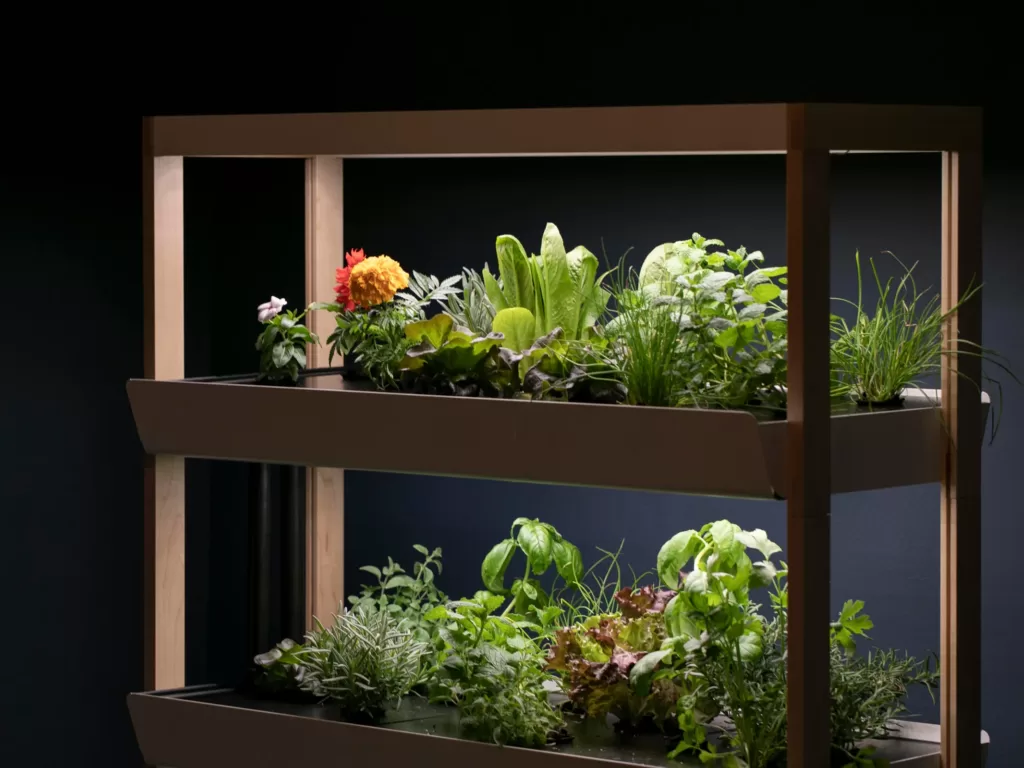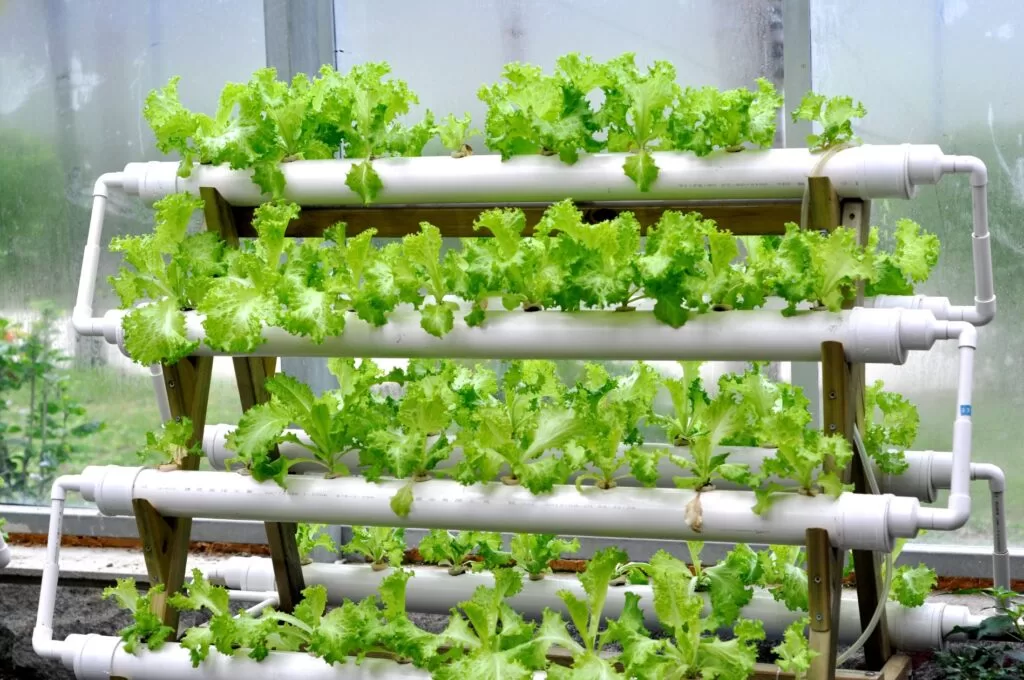Hydroponic gardening has revolutionized the way we grow crops, offering a convenient and efficient solution for indoor gardening enthusiasts. By eliminating the need for soil and leveraging nutrient-rich water solutions, hydroponic systems provide an ideal environment for growing a wide variety of crops. In this article, we will explore the best hydroponic crops, offering insights into their cultivation techniques and tips for success.
Understanding Hydroponic Gardening
Hydroponic gardening is a soilless method of cultivating plants, where nutrients are dissolved in water and delivered directly to the plant roots. This approach offers several advantages over traditional soil-based gardening, including precise nutrient control, reduced water usage, and the ability to grow crops in limited space. By harnessing hydroponic systems, indoor gardeners can enjoy year-round cultivation and higher yields.
Factors to Consider for Choosing Hydroponic Crops
When selecting crops for your hydroponic garden, it’s important to consider various factors. Evaluate the growth requirements of different crops, including light intensity, temperature, pH levels, and nutrient needs. Additionally, consider your available space and personal preferences for taste and culinary use. By understanding these factors, you can choose hydroponic crops that align with your goals and resources.
Leafy Greens:
Ideal Hydroponic Crops Leafy greens are well-suited for hydroponic cultivation due to their rapid growth and shallow root systems. Lettuce, spinach, kale, and Swiss chard are popular choices for hydroponic gardens. These crops thrive in nutrient-rich water solutions, require moderate light levels, and have relatively short growing cycles. Detailed instructions on nutrient solutions, lighting requirements, and cultivation techniques for each leafy green will ensure successful growth.

Herbs:
Aromatic Delights in Hydroponics Herbs bring fresh flavors and enticing aromas to any indoor garden. Basil, mint, parsley, and cilantro are excellent choices for hydroponic cultivation. These herbs require well-balanced nutrient solutions, ample light, and proper air circulation. By following specific guidelines for each herb, you can ensure robust growth and an abundant supply of aromatic delights for your culinary creations.
Fruitful Endeavors:
Hydroponic Fruit Crops Contrary to popular belief, it is possible to grow certain fruit crops in hydroponic systems. Strawberries, tomatoes, and peppers are among the fruits that can thrive indoors. These crops require careful attention to lighting, trellising techniques, and pollination methods. By creating the optimal growing conditions and maintaining a balanced nutrient profile, you can enjoy the sweet rewards of hydroponic fruit cultivation.
Beyond Greenery:
Exploring Unique Hydroponic Crops Hydroponic gardening opens up exciting possibilities for cultivating unique and less common crops. Microgreens, edible flowers, and exotic vegetables offer a diverse range of flavors, colors, and textures. These crops require specific nutrient profiles, light intensity, and growth conditions. Exploring these lesser-known hydroponic crops adds a touch of creativity and adventure to your indoor garden.
Hydroponic gardening offers an innovative and efficient way to grow a wide array of crops in your indoor garden. By selecting the best hydroponic crops and understanding their specific cultivation requirements, you can achieve thriving plants and a bountiful harvest. Embrace the versatility of hydroponics, experiment with various crops, and enjoy the satisfaction of homegrown produce. Start your hydroponic journey and unlock the potential of indoor gardening today.
Remember, the success of your hydroponic garden relies on diligent monitoring, proper nutrient management, and a passion.
Nutrient Solutions:
One of the key aspects of hydroponic gardening is the formulation of nutrient solutions. These solutions contain the essential minerals and nutrients needed for plant growth. It’s important to maintain the proper pH levels and nutrient balance to ensure healthy plant development. Conduct regular monitoring and adjust the nutrient solution accordingly.
Lighting Considerations:
Indoor hydroponic gardens rely on artificial lighting to provide the necessary light spectrum for plant photosynthesis. LED grow lights are popular choices due to their energy efficiency and adjustable settings. Different crops have varying light requirements, so it’s important to choose the right type of light and adjust the intensity and duration accordingly.
Temperature and Humidity Control:
Maintaining an optimal temperature and humidity level is crucial for the success of hydroponic crops. Most crops thrive in temperatures between 65-75°F (18-24°C) and require humidity levels around 50-70%. Proper ventilation, fans, and dehumidifiers can help regulate temperature and humidity in your indoor garden.

Pest and Disease Management:
While hydroponic systems can reduce the risk of soil-borne pests and diseases, it’s still important to implement preventive measures. Regularly inspect your plants for signs of pests or diseases and take immediate action if any issues arise. Beneficial insects, such as ladybugs or predatory mites, can be introduced to control pests in a natural and chemical-free manner.
Crop Rotation and Succession Planting:
To maximize your hydroponic garden’s productivity, consider implementing crop rotation and succession planting. By rotating crops, you can prevent the buildup of pests and diseases and maintain nutrient balance in the system. Succession planting ensures a continuous supply of fresh produce by planting new crops as others are harvested.
Water Quality:
The quality of water used in hydroponic systems is crucial for the health of your plants. Avoid using tap water that contains high levels of chlorine or other contaminants. It’s recommended to use filtered or purified water to prevent any adverse effects on plant growth. Regularly check the pH and nutrient levels of the water to maintain optimal conditions.
Experimentation and Adaptation:
Hydroponic gardening offers a dynamic and experimental approach to plant cultivation. Don’t be afraid to try new crops, adjust nutrient formulations, or explore different techniques. Keep records of your observations and learn from your experiences to continually improve your hydroponic gardening skills.
Remember, hydroponic gardening requires attention to detail and a willingness to adapt to the specific needs of each crop. With proper care, you can enjoy a thriving indoor garden and a bountiful harvest of fresh, homegrown produce throughout the year.
Hydroponic gardening and the top hydroponic crops:
Vertical Farming:
Hydroponic systems are well-suited for vertical farming, which involves growing plants in stacked layers or vertically inclined structures. Vertical farming maximizes space utilization and allows for higher crop yields in limited areas. It’s an excellent option for indoor gardens with limited floor space.
Hydroponic Techniques:
There are different hydroponic techniques to choose from, including deep water culture (DWC), nutrient film technique (NFT), and drip irrigation. Each technique has its own advantages and considerations. Research and choose the technique that best suits your space, resources, and crop selection.
Microgreens:
Microgreens are young, tender greens that are harvested when they are only a few inches tall. They are packed with nutrients and have gained popularity in culinary applications. Growing microgreens hydroponically allows for quick and efficient production, making them an ideal choice for indoor gardens.
Edible Flowers:
Hydroponic gardening opens up opportunities to grow edible flowers like nasturtiums, pansies, and marigolds. These vibrant and flavorful flowers can be used to garnish salads, desserts, and beverages. Ensure that the flowers are grown organically and free from any pesticides.
Aquaponics:
Aquaponics is a combination of hydroponics and aquaculture, where fish and plants are grown together in a symbiotic system. The fish waste provides nutrients for the plants, while the plants filter and clean the water for the fish. Aquaponics offers a sustainable and efficient method of growing both fish and crops.
Crop-Specific Considerations:
Different crops have specific requirements when it comes to nutrient levels, pH, temperature, and lighting. It’s important to research and understand the specific needs of each crop you intend to grow. This will ensure optimal growth and yield.
Seed Selection:
Choosing high-quality seeds or seedlings is crucial for successful hydroponic cultivation. Look for reputable seed suppliers and select varieties that are well-suited for hydroponic growing conditions. Consider factors such as disease resistance, growth rate, and flavor when selecting seeds.

Harvesting and Storage:
Proper harvesting techniques and post-harvest storage are essential for maintaining the quality and freshness of your hydroponic crops. Harvest leafy greens when they reach the desired size and pick fruits when they are ripe. Store harvested produce in cool and well-ventilated areas to prolong shelf life.
Continuous Learning:
Hydroponic gardening is a continuously evolving field with new techniques, technologies, and crop varieties emerging. Stay updated with the latest research, attend workshops or webinars, and engage with online communities to learn from other hydroponic gardeners. Sharing knowledge and experiences can greatly enhance your skills and outcomes.
Remember, hydroponic gardening offers an exciting and innovative way to cultivate a wide range of crops indoors. With careful planning, attention to detail, and a willingness to learn, you can enjoy the benefits of growing your own fresh and nutritious produce throughout the year. Happy hydroponic gardening!
Nutrient Solutions:
In hydroponic gardening, plants receive their nutrients directly from water-based nutrient solutions instead of soil. These solutions contain a precise balance of essential nutrients that plants need for healthy growth. It’s important to monitor and maintain the nutrient levels in the solution to ensure optimal plant development.
Lighting Options:
Since hydroponic gardens are typically grown indoors, providing adequate lighting is crucial for photosynthesis and plant growth. LED grow lights are commonly used in hydroponic setups due to their energy efficiency, customizable spectrum, and low heat output. Consider the light requirements of different crops and adjust the lighting accordingly.
Pest and Disease Management:
While hydroponic gardening reduces the risk of soil-borne pests and diseases, it’s still important to be proactive in pest and disease management. Monitor your plants regularly for signs of pests or diseases, and take appropriate measures such as using organic pest control methods or beneficial insects to maintain a healthy growing environment.
pH Monitoring and Adjustments:
The pH level of the nutrient solution plays a vital role in nutrient availability to plants. Most hydroponic crops thrive in a slightly acidic to neutral pH range. Regularly monitor the pH level of the nutrient solution using a pH meter and make necessary adjustments using pH adjusters to maintain an optimal pH level.
Water Quality:
The quality of water used in hydroponic systems is crucial for the overall health of the plants. Ideally, use clean, filtered water that is free from contaminants and chemicals. If tap water is used, it’s recommended to let it sit for 24-48 hours to allow chlorine to dissipate before using it in the hydroponic system.
Transplanting Seedlings:
When starting hydroponic crops from seeds, it’s important to transplant the seedlings at the right time. The seedlings should have developed a strong root system and be sturdy enough to handle the transplant process. Be gentle when transplanting to avoid damaging the delicate roots.
Pollination:
Some hydroponic fruiting crops, such as tomatoes and peppers, require pollination for fruit set. Since indoor environments may lack natural pollinators, manual pollination is often necessary. Gently shake the flowers or use a small brush to transfer pollen between flowers to facilitate pollination and fruit development.
Maintenance and Cleaning:
Regular maintenance and cleaning of the hydroponic system are essential for its smooth operation. This includes checking and adjusting nutrient levels, monitoring water temperature, cleaning and disinfecting equipment, and ensuring proper airflow and ventilation in the growing area.
Experimentation and Adaptation:
Hydroponic gardening provides ample opportunities for experimentation and adaptation. You can try different hydroponic techniques, nutrient formulations, and crop varieties to find what works best for your specific setup and preferences. Don’t be afraid to learn from your experiences and make adjustments along the way.
Environmental Control:
In indoor hydroponic gardening, maintaining proper environmental conditions is crucial for crop success. Factors such as temperature, humidity, and airflow need to be monitored and controlled to create an optimal growing environment. Consider using fans, heaters, humidifiers, and dehumidifiers to regulate these conditions as needed.
Harvesting Techniques:
Each crop has specific harvesting techniques that ensure maximum flavor and quality. Learn about the proper harvesting methods for the hydroponic crops you’re growing. For leafy greens, harvest outer leaves while allowing the inner leaves to continue growing. For fruits, harvest when they reach their mature size and color.
Remember, hydroponic gardening is a versatile and innovative approach to growing crops indoors. It offers numerous benefits such as year-round cultivation, space efficiency, and reduced water
While hydroponic gardening has many advantages, there are also certain risks and considerations to keep in mind. Here are some potential risks and things to look out for when engaging in hydroponic gardening:
Equipment Failure:
Hydroponic systems rely on various equipment such as pumps, timers, and lighting fixtures. Equipment failure can disrupt the growth of your crops and may require immediate attention and replacement. Regularly inspect and maintain your equipment to minimize the risk of failure.
Nutrient Imbalances:
Maintaining the correct nutrient balance is crucial for the health and growth of your plants. Imbalances or deficiencies in essential nutrients can lead to stunted growth, nutrient burn, or nutrient lockout. Monitor your nutrient solution regularly and adjust as necessary to ensure optimal plant nutrition.
pH Fluctuations:
Fluctuations in pH levels can impact nutrient availability and uptake by plants. Rapid shifts in pH can stress the plants and affect their growth. Regularly monitor and adjust the pH of your nutrient solution to keep it within the desired range for your crops.
Disease and Pest Management:
While hydroponic systems reduce the risk of soil-borne diseases and pests, they are not completely immune. Diseases like root rot and pests like aphids or fungus gnats can still affect your plants. Maintain a clean and sterile growing environment, practice good hygiene, and implement integrated pest management strategies to prevent and manage such issues.
Waterborne Pathogens:
The recirculating nature of hydroponic systems can create an environment conducive to the growth of waterborne pathogens, such as Pythium or Fusarium. Regularly monitor water quality and ensure that it is free from contaminants. Consider using UV sterilizers or beneficial microbes to prevent the proliferation of pathogens.
Temperature and Humidity Control:
Proper temperature and humidity levels are essential for plant growth and can be more challenging to control in indoor environments. High temperatures and humidity can create favorable conditions for mold and fungal growth, while low temperatures can slow down plant growth. Use fans, heaters, humidifiers, or dehumidifiers to maintain optimal conditions for your crops.
Lack of Natural Pollinators:
Some crops, especially fruits and vegetables, require pollination for fruit set. In indoor hydroponic gardens, the absence of natural pollinators can pose a challenge. Hand-pollination or the use of pollination techniques such as vibrating the plants can help ensure proper fruit development.
Water and Power Outages:
Hydroponic systems depend on a continuous supply of water and electricity. Water or power outages can disrupt the growth and health of your plants, particularly during critical growth stages. Consider having backup power sources, such as generators, and ensure a reliable water supply to mitigate the impact of potential outages.
Overcrowding and Light Competition:
In hydroponic systems, plants are often grown in close proximity to maximize space efficiency. However, overcrowding can lead to light competition and hinder the growth of individual plants. Ensure adequate spacing between plants and use reflective materials or adjust lighting to optimize light distribution.
Learning Curve:
Hydroponic gardening requires knowledge and understanding of plant nutrition, system maintenance, and environmental control. It may take time to learn and master the techniques, troubleshoot issues, and fine-tune your system for optimal results. Be prepared to invest time and effort into learning and experimentation.
By being aware of these potential risks and taking proactive measures to address them, you can minimize their impact and enjoy successful hydroponic gardening. Regular monitoring, maintenance, and attention to plant health are key to overcoming challenges and achieving productive and thriving hydroponic crops.






